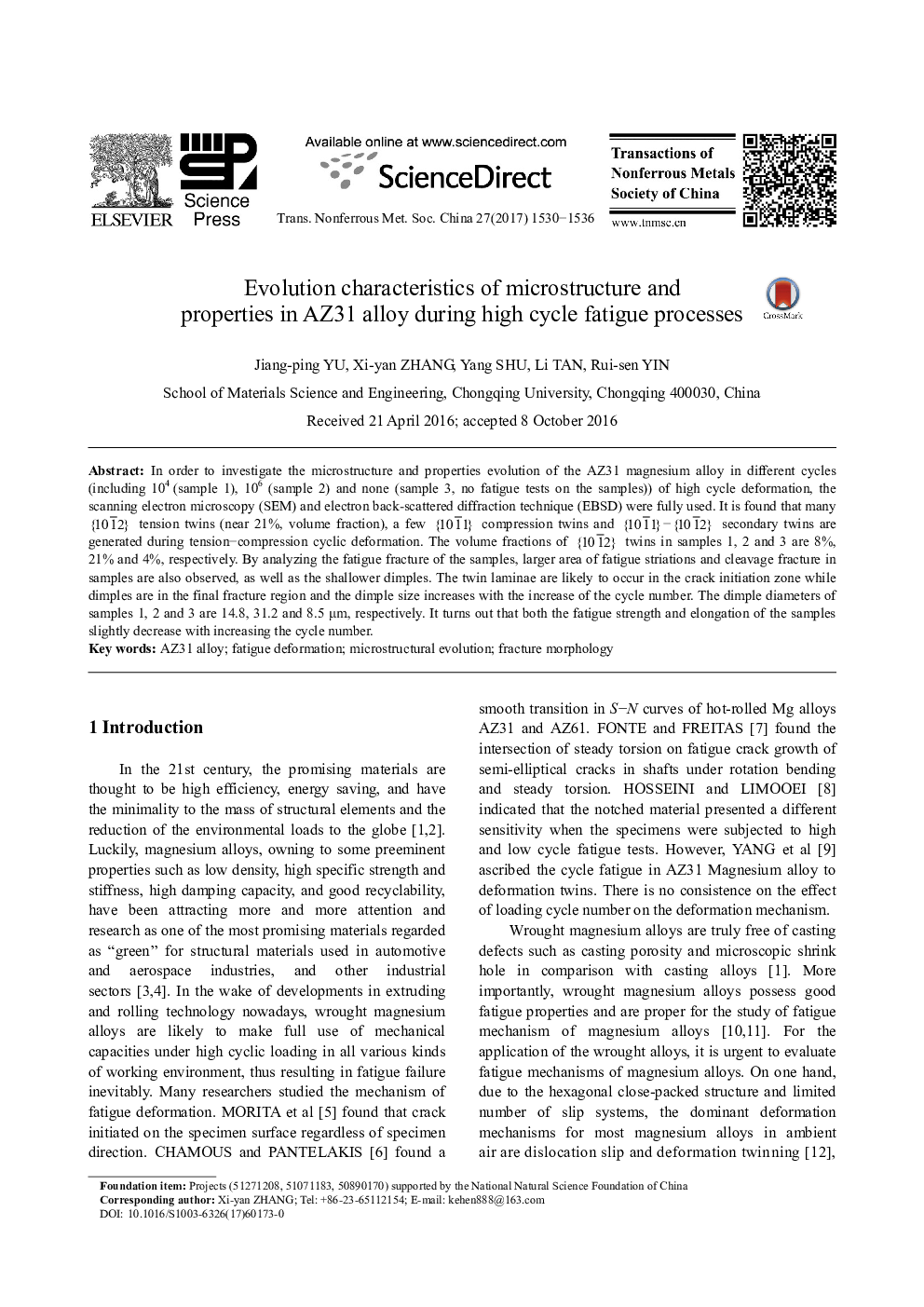| Article ID | Journal | Published Year | Pages | File Type |
|---|---|---|---|---|
| 8011863 | Transactions of Nonferrous Metals Society of China | 2017 | 7 Pages |
Abstract
In order to investigate the microstructure and properties evolution of the AZ31 magnesium alloy in different cycles (including 104 (sample 1), 106 (sample 2) and none (sample 3, no fatigue tests on the samples)) of high cycle deformation, the scanning electron microscopy (SEM) and electron back-scattered diffraction technique (EBSD) were fully used. It is found that many tension twins (near 21%, volume fraction), a few compression twins and - secondary twins are generated during tension-compression cyclic deformation. The volume fractions of twins in samples 1, 2 and 3 are 8%, 21% and 4%, respectively. By analyzing the fatigue fracture of the samples, larger area of fatigue striations and cleavage fracture in samples are also observed, as well as the shallower dimples. The twin laminae are likely to occur in the crack initiation zone while dimples are in the final fracture region and the dimple size increases with the increase of the cycle number. The dimple diameters of samples 1, 2 and 3 are 14.8, 31.2 and 8.5 μm, respectively. It turns out that both the fatigue strength and elongation of the samples slightly decrease with increasing the cycle number.
Related Topics
Physical Sciences and Engineering
Materials Science
Metals and Alloys
Authors
Jiang-ping YU, Xi-yan ZHANG, Yang SHU, Li TAN, Rui-sen YIN,
